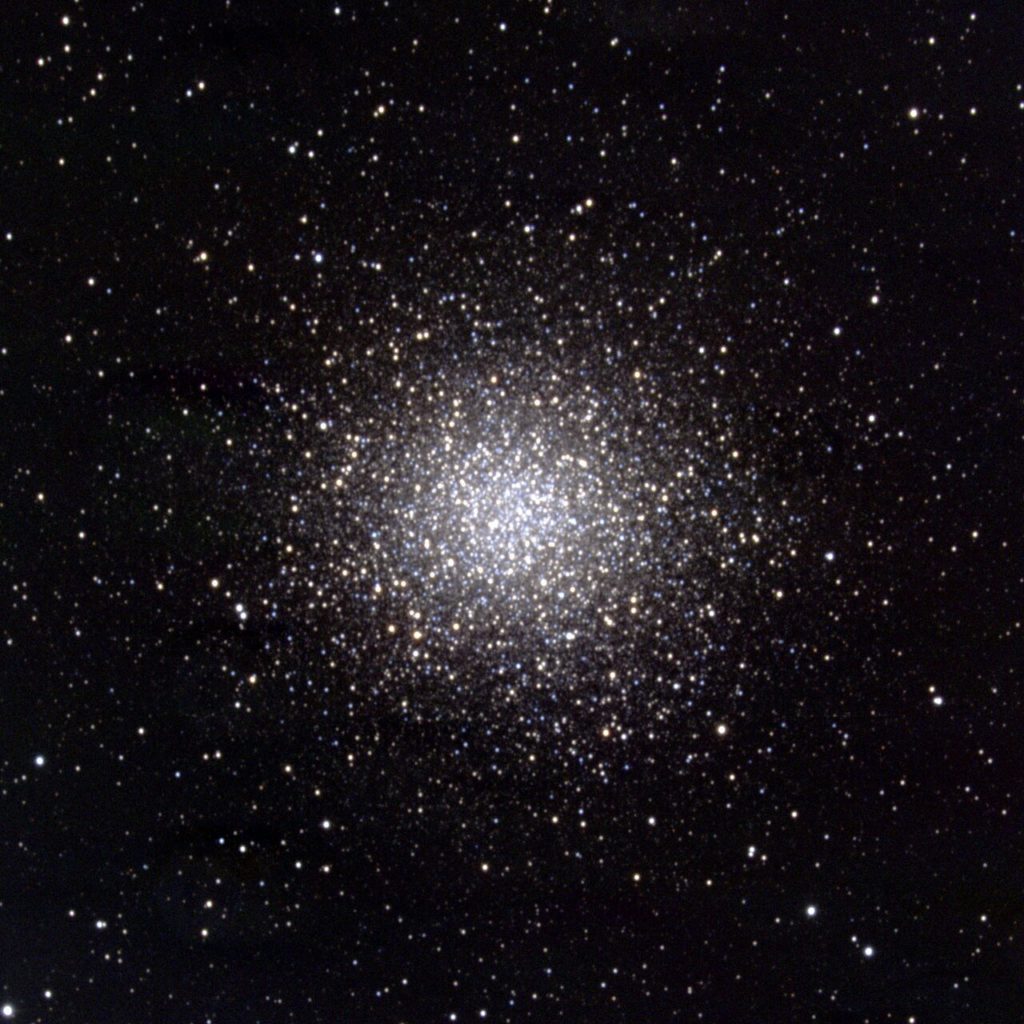
Using the Hubble Space Telescope (HST), astronomers have observed the globular cluster Messier 14 and its peculiar multiple stellar populations. Results of the observational campaign, published January 7 on arXiv.org, deliver important insight into the nature of this cluster.
Globular clusters (GCs) are collections of tightly bound stars orbiting galaxies. Astronomers perceive them as natural laboratories enabling studies on the evolution of stars and galaxies. In particular, globular clusters could help researchers better understand the formation history and evolution of early type galaxies, as the origin of GCs seems to be closely linked to periods of intense star formation.
At a distance of about 30,300 light years away from the Earth, Messier 14 (or M14, also known as NGC 6402) is GC in our Milky Way galaxy, located near the Galactic plane. Although M14 is one of the most massive and luminous Galactic GCs, it has not been comprehensively studied yet, mainly due to its high reddening (approximately 0.6) and its proximity to the Galactic plane.
In order to change this, a team of astronomers led by Francesca D’Antona of Rome Observatory in Italy decided to conduct photometric observations of M14 using HST’s Ultraviolet and Visual Channel of the Wide Field Camera 3 (UVIS/WFC3) and the Wide Field Channel of the Advanced Camera for Surveys (WFC/ACS).
“We have presented multi-band photometry of the massive GC NGC 6402 based on multi-band HST observations collected as part of GO-16283 (PI.F.D’Antona),” the researchers wrote in the paper.
The observations allowed the team to obtain the chromosome map (ChM) of M14. It is a pseudo-two-color diagram that serves as an efficient tool to classify globular clusters and to characterize their multiple populations.
One of the most intriguing properties of multiple populations in M14 is a huge gap in the distribution of some light elements like oxygen or magnesium. Therefore, the authors of the study used ChM to investigate this peculiarity.
According to the paper, the chromosome map of M14 does not show stars with extreme chemical compositions as observed in some other known massive GCs. It was noted that the ChM lacks the group of stars with extreme anomalies (dubbed E stars).
The ChM shows that M14 contains a group of stars with higher metallicity—the so-called population 2G stars (dubbed 2GD)—on the red side of the diagram. In general, 2G stars showcase abundance patterns typical of gas processed at very high temperatures (between 30 and 100 million K) by proton capture reactions. These results indicate that M14 is a Type II cluster—an iron-complex cluster exhibiting a remarkably complex ChM.
The study also found that M14 does not host stellar populations with an extreme helium content and the researchers suppose that this cluster has undergone two stages of 2G star formation.
“The first one from matter strongly contaminated with p-processed elements and significantly rich in helium, the second one from matter—not necessarily sharing the same heavy p-processing of the first event—heavily diluted with pristine gas, so that both the helium content and the abundances of light elements remain either standard or close to standard,” the scientists concluded. https://phys.org/news/2022-01-globular-cluster-messier-peculiar-multiple.html








Recent Comments